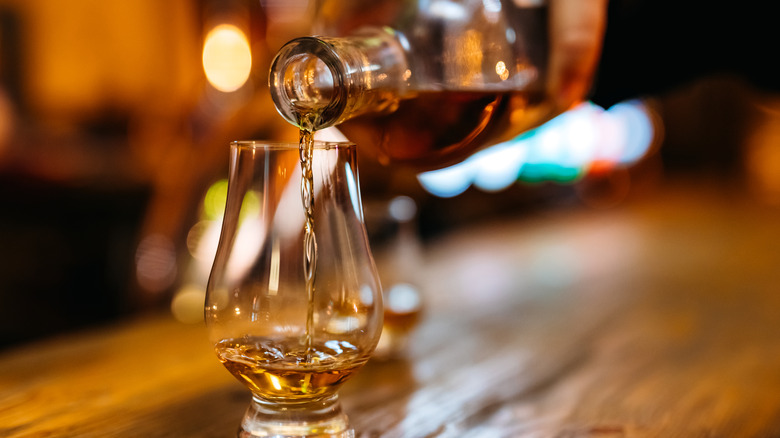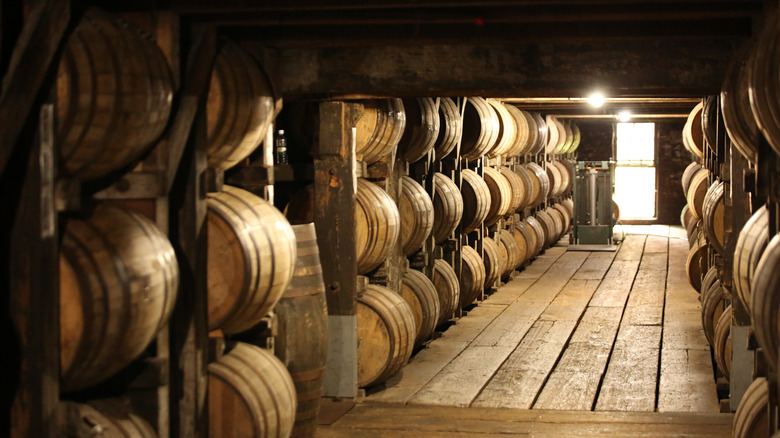How To Understand The Age Statement On Your Bottle Of Bourbon
The age statement on your bottle of bourbon seems so straightforward. The bottle says it's aged for four years – what else is there to know? Well, a lot actually. Producing bourbon is a complicated process that involves blending different batches together and those barrels aren't always sealed up on the same day or even in the same year. For the sake of simplicity, the number printed on the label doesn't convey all the details. That makes it easier to understand at the cost of being less informative.
All you really need to know is that the age statement is telling you how old the youngest contributing batch of bourbon in the bottle is. If the bottle says three years, that could mean that there are four batches of whiskey inside, all of which aged for three years. Or, it could mean that one batch is three years old, two are four years old, and one is five. There's really no way to tell from the consumer side.
All bourbon is required to be aged for at least two years, but if it's aged for longer than four, the distiller doesn't have to place an age statement on the bottle. Once you get into higher age statements, distilleries will likely include that information anyway because it's a selling point. But keep in mind that the age statement is specifically about time spent in the barrel. If you have a 10-year bourbon that's been sitting on your shelf for five years, it's still a 10-year.
To blend or not to blend
Blending is an important part of the whiskey process, especially for big distilleries that are producing immense volumes of whiskey, all of which needs to have a consistent taste. Jack Daniels Old No. 7 tastes the same regardless of where and when you buy it partly because the mash bill is the same but also because the Master Distiller is talented at blending. Each distillery is going to have its own take on how to blend and every batch requires innovation and careful attention to detail.
If the distillery is keeping track of what barrels are being blended, they aren't sharing that information openly with the public. That keeps you in the dark somewhat, but so long as you enjoy the whiskey, does it really matter? If you're interested in exploring specific age statements and want to avoid the ambiguity, you should dive into the world of single barrel bourbon.
Single barrel bourbon is unblended so what you get in the bottle comes from only one barrel of whiskey. If there's an age statement on a single barrel bourbon, there's no ambiguity, that's how old the whiskey is. These whiskeys aren't going to be consistent in flavor from year to year, but whiskey connoisseurs seek these products out for that very reason. They're unique to the fullest extent of the word. Distilleries will also choose exceptional barrels to make single barrel bourbons out of, so you really are getting the cream of the crop.

